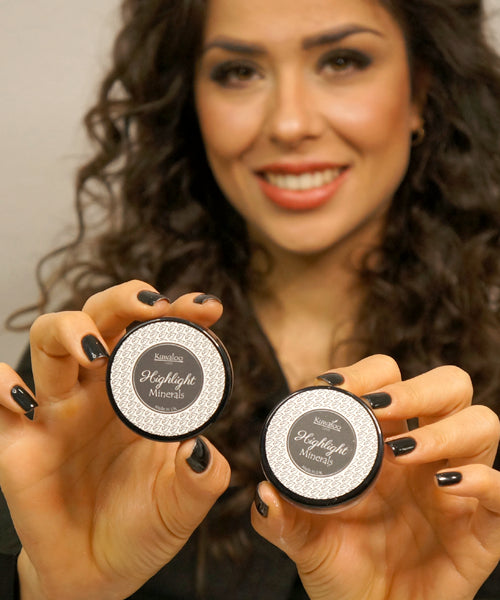
0 Comments
Top 10 Tips for Effectively Sanitizing Your Hands
The recent COVID-19 pandemic has made the world more aware than ever about how important it is to keep hands squeaky clean and sanitized. Early on in the Corona crisis, it was determined by the CDC (Centers for Disease Control and Prevention) that one of the most effective ways to prevent and stop the spread of infection is for individuals to keep their hands germ-free.
Even though a person uses hand sanitizer doesn’t insure they are ridding the surface of germs though. It is imperative to take certain factors into consideration when sanitizing your hands.
Here are 10 tips that will help you make SURE you are sanitizing your hands properly:
- Know What’s in Your Hand Sanitizer
Using a hand sanitizer that contains a minimum of 60% alcohol is key, according to the CDC. Any less just isn’t strong enough. More alcohol is even better. If the product doesn’t tell you how much alcohol is in it that should be a big red flag. Remember, any manufacturer can advertise they have alcohol in their mix if they have so much as a smidgeon. Be wise and be well.
- Use Premium Hand Sanitizer
Sure, you can grab a cheap bottle of hand sanitizer at the dollar store - if you can find any, that is. But, like the old adage goes - “You get what you pay for.” When disease is running rampant is no time to take chances. In fact, there really is no good time to take chances when it comes to sanitizing your hands. Choosing an effective product to sanitize your hands is ultra-important and it is up to you to research the label and any other information you can find about it. It’s your health that is at stake and it’s your responsibility to fully check it out and not to blindly trust that all hand sanitizing products are good. They aren’t.
- Make Sure the Alcohol in Your Hand Sanitizer is Top-Quality
All alcohol products are not created equally. The quality of alcohol must be top-notch or it is useless. You’ll want to make sure the type of alcohol is right too. Pure Grain Alcohol is the one to look for because it contains anticeptic, anti-viral, and anti-bacterial properties.
- Twenty Should be Plenty
The CDC recommends washing or sanitizing your hands for at least 20 seconds each time. Of course it never hurts to go a little longer. Sanitize your entire hands thoroughly and get in all the nooks and crannies, like in between your fingers and wash the front, back, and palms of your hands. Once you have sanitized them, be aware of what you do with your hands after the clean-up. You may be surprised what germs they encounter.
- Repeat Often
How often to sanitize your hands is a matter of common sense. When you use the restroom, before you eat a snack or meal, when you touch something in public, after you cough, blow your nose, or sneeze, and any other time you’re inclined to are all great times to sanitize your hands again.
- Stick Close to Nature
As with any product that you are going to use on your body, you want the substance you’re sanitizing your hands with to be as close to nature as possible. Look for products that have bonus ingredients like essential oils that fight germs, natural substances in the mix that soften your skin, and any other healthy perks the sanitizer has to offer. Pay close attention not only to what the hand sanitizer has got, but what it has not got too. If you’re not careful, you might sink chemicals and other dangerous toxins into your body.
- Pick a Hand Sanitizer that Entices You
Choosing a hand sanitizing product that you love will encourage you to sanitize more often. When a sanitizers smells pleasant and makes your skin feel soft, smooth, and clean, you will find yourself looking forward to the next round. Do yourself a favor and get a luxurious hand sanitizer. You (and your health) are worth it.
- DIY Hand Sanitizer is NOT Recommended
Believe it or not, the Federal Drug Administration (FDA) not only doesn’t recommend consumers make do-it-yourself versions of hand sanitizers, they actually go so far as to warn against it due to the strong possibility of concocting a failed formulation. When hands are sanitized with a faulty sanitizer, you can easily end up with serious skin burns. Furthermore, there is the likelihood of having a false sense of security in a homemade product that very well may be useless.
- Earth and Animal Friendly Products Rule
Many hand sanitizers are made from ingredients that are not eco-friendly and the methods used to make them are far from kind to the earth. Some even test their products on animals. Be sure to do your homework and find eco-friendly sanitizers that don’t harm animals in their processing.
- Availability is Everything
If you can’t get your hands on a hand sanitizer, well, that’s a no-brainer. You can’t use what you don’t have. While a slew of brick-and-mortar stores are sold out of sanitizers, you can find some great ones online if you look around. Some of the best products on the market are readily available to be ordered.
If you are looking for a fabulous product that meets all the ten qualifications above and then some, you’ll want to check out Kuwaloo Care Hand Sanitizers with 70% premium Pure Grain Alcohol. Available in luscious scents like Watermelon, Orange, Coconut Lime, Aloe Vera, and Tea Tree Oil, the formulations are superior quality with bonus ingredients like Willow Bark for healing properties, Triethanolamine to balance Ph, and Kosher Vegetable Glycerin for skin softening. Kuwaloo Care Hand Sanitizers are never tested on animals and are organic, vegan, and eco-friendly. Why risk your health to hand sanitizers that may do more harm than good? When taking chances just isn’t an option, the best option is Kuwaloo Care Hand Sanitizers.
Written by Cheryl Jerabek
About the author

Cheryl Jerabek lives in a tiny remote mountain town in Southwestern Colorado and also has a lakeside place in Texas. She writes full-time from her cabin nestled in the mountains.
“I can’t remember ever NOT writing,” she is quick to say. “Even before I was old enough to spell, I wrote stories in my head.”
Cheryl is the author of around 150 eBooks, some ghost written, some in her name. She also writes blogs, articles, commercials, scripts, and most anything else that can be written.
“I know it is what I was born to do because I can’t NOT write,” she explained.
In her time off, Cheryl loves hanging out with her husband, two grown children and three grandchildren.
Article Photo by Engin Akyurt from Pexels

